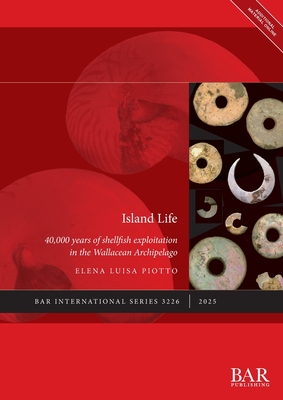Island Life: 40,000 years of shellfish exploitation in the Wallacean Archipelago

Island Life: 40,000 years of shellfish exploitation in the Wallacean Archipelago
This research is based on the coastal economies of three sites in the Wallacean archipelago of Island Southeast Asia: Asitau Kuru (formerly Jerimalai) and Matja Kuru 2 on the island of Timor, and Tron Bon Lei, Alor Island. The site occupation dates all begin within the Pleistocene, with the earliest dates at c. 40,000 years, spanning the Last Glacial Maximum, through the Pleistocene/Holocene Transition, and into the Holocene, with the latest dates at c. 2,000 years. This book focuses on human exploitation of shellfish, both subsistence and artefactual, and presents new coastal based economic data. It is one of the few comprehensive archaeomalacological studies conducted in the region, and the first such study for these sites.
This research contributes to understanding of human coastal adaptations and the importance of coastal economies for migrating early Homo sapiens populations, particularly in areas where terrestrial fauna was limited.
PRP: 669.60 Lei
Acesta este Prețul Recomandat de Producător. Prețul de vânzare al produsului este afișat mai jos.
602.64Lei
602.64Lei
669.60 LeiLivrare in 2-4 saptamani
Descrierea produsului
This research is based on the coastal economies of three sites in the Wallacean archipelago of Island Southeast Asia: Asitau Kuru (formerly Jerimalai) and Matja Kuru 2 on the island of Timor, and Tron Bon Lei, Alor Island. The site occupation dates all begin within the Pleistocene, with the earliest dates at c. 40,000 years, spanning the Last Glacial Maximum, through the Pleistocene/Holocene Transition, and into the Holocene, with the latest dates at c. 2,000 years. This book focuses on human exploitation of shellfish, both subsistence and artefactual, and presents new coastal based economic data. It is one of the few comprehensive archaeomalacological studies conducted in the region, and the first such study for these sites.
This research contributes to understanding of human coastal adaptations and the importance of coastal economies for migrating early Homo sapiens populations, particularly in areas where terrestrial fauna was limited.
Detaliile produsului










